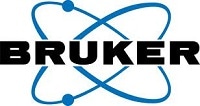Dermorphin, an opioid hepta-peptide, is a derivative obtained from the skin secretions of South American frogs. It is 30-40 folds more powerful as an analgesic when compared to morphine1. The presence of amino acid D-alanine makes dermorphin unique by providing resistance to protease-mediated degradation.
Although the D-amino acid peptides are preferred for their use in peptidomimetic drug design and for their low immunogenic response, its application in horse racing propels its popularity. Dermorphin’s pain-killing properties are used in improving race horse performance beyond its physical limits, thus causing injury to the animal. Due to this fact, the Association of Racing Commissioners International Model Rules have categorized dermorphin as a Class I prohibited substance.
Quantifying dermorphin in equine urine is a difficult analysis due to the associated complex matrix and the unavailability of an established labeled internal standard. This application note describes the quantitative analysis of dermorphin in equine urine using an EVOQ Elite model LC triple quadrupole mass spectrometer. The assay’s linear dynamic range was 0.05-100 ng/ mL, enabling the achievement of required low limit of quantitation (LLOQ) of 0.05 ng/ mL.
Experimental
Chromatography (Advance HPLC)
- Column: C18, 3µ, 2.1x100mm (ACE 3µ, C18, 100x2.1mm)
- Flow rate: 0.4mL/min
- Injection volume: 40µL
- Mobile phase A: Water with 0.2% Formic acid
- Mobile phase B: Acetonitrile with 0.2% Formic acid
- Gradient conditions:
- 0.00min 5% B
- 0.20min 5% B
- 8.00min 95% B
- 8.50min 95% B
- 8.51min 5% B
- 12.50min 5% B
Mass Spectrometry (EVOQ Elite)
- VIP Heated-ESI Temperature: 350°C
- Nebulizer gas: 70 units
- Heated gas: 70 units
- Cone gas: 10 units
- Cone gas temp: 250°C
- Active exhaust: On
- Spray voltage: +4000 V
- MRM for Dermorphin and Deltorphin II (as Internal Standard):
- m/z 803.4>602 (CE=20v), Quantifier ion
- m/z 803.4>202 (CE=32v), Qualifier ion
- m/z 783>277 (CE=40 v), Internal Standard
.jpg)
Figure 1. The Bruker EVOQ
Results and Discussion
The EVOQ Elite triple quadrupole mass spectrometer was used to develop the assay of dermorphin in equine urine. The equine urine sample preparation was done with solid phase extraction. The analysis was able to achieve accurate quantification between 0.05 and 100 ng/mL easily. Figure 2 depicts a MRM chromatogram of 0.05ng/mL dermorphin in equine urine.
.jpg)
Figure 2. Chromatogram of demorphin at 0.05ng/mL (LOQ) and the IS deltorphin (green trace) in equine urine.
.jpg)
Figure 3. Calibration curve for demorphin in equine urine in the range 0.05-100ng/mL
Table 1. shows the response factors of low, mid and high QC levels with a RSD% of 7.3%, illustrating a powerful ion source performance because the elimination of a divert valve that was utilized for preventing contamination of matrix onto the ion source.
Table 1. : Response factor %RSD for the QC
| QC |
Concentration (ppb) |
Area Ratio |
Response Factor |
| Low QC |
0.3 |
0.01000 |
0.03335 |
| Low QC |
0.3 |
0.01031 |
0.03438 |
| Mid QC |
6.0 |
0.22314 |
0.03719 |
| Mid QC |
6.0 |
0.17834 |
0.02972 |
| High QC |
50.0 |
1.67945 |
0.03359 |
| High QC |
50.0 |
1.62102 |
0.03242 |
| Response Factor RSD |
7.3% |

This information has been sourced, reviewed and adapted from materials provided by Bruker Life Sciences Mass Spectrometry.
For more information on this source, please visit Bruker Life Sciences Mass Spectrometry.